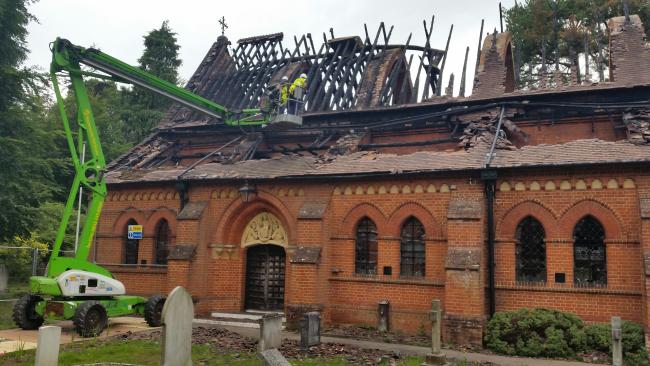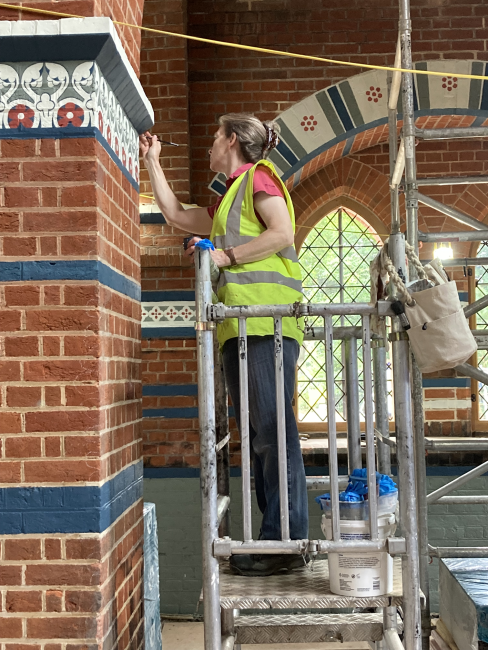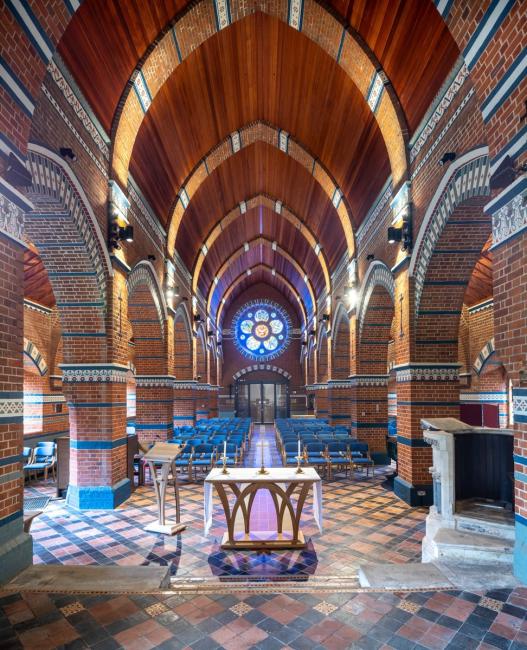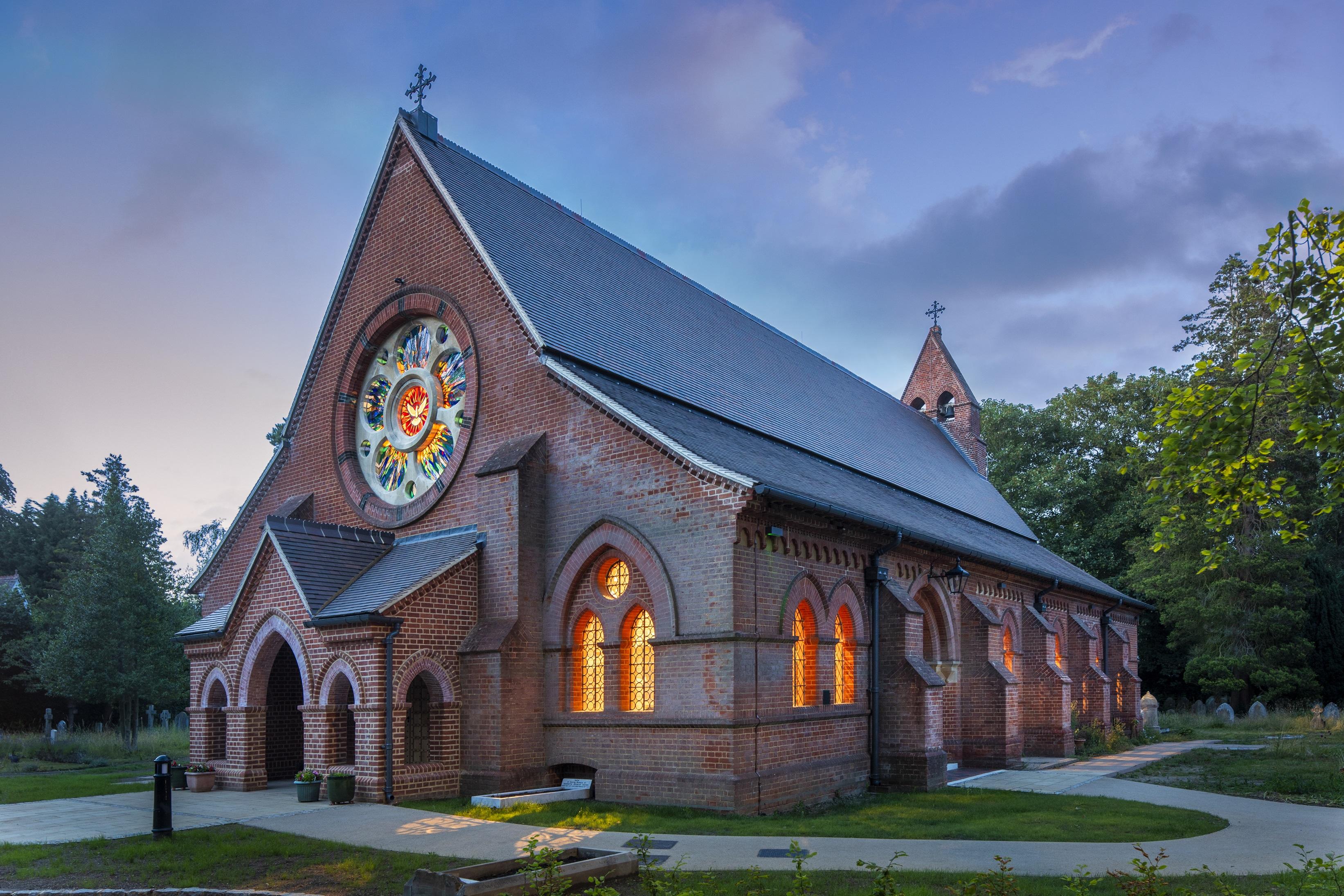Sometimes, through no fault of the congregation or leaders, disaster strikes at a church. It can be devastating for all who care for the building and in the wake of major setbacks, finding hope can be tough. But the right approach can help a church community to make a full recovery.
All Saints Church in Fleet, Hampshire, suffered a devastating blow that closed the building for eight years when a fire ripped through it. But since re-opening in 2023, the church feels stronger than before.
A major setback
In June 2015, All Saints suffered an arson attack, leaving the Grade II Listed building a burnt-out shell.
“The sight of the [burnt-out] church was heartbreaking. You know, it just looked so sad and so awful,” shares Jan Cole, a volunteer at the church.
“It happened on the Monday evening and on the Thursday, we had a service just for us all to get together and to pray at our sister church.”
But it wasn’t just the congregation who were devastated by the attack.
“Messages came from all over the world,” explains Jan.
“...people wanted to get the church rebuilt and that was echoed actually later on when myself and a friend went into the shopping centre to try and get sponsorship for bricks.
“People stopped to say, ‘look, that church meant so much. I was married there’ or ‘my daughter was baptised there’. [There were] all sorts of connections.”

Responding to disaster
The meaning that All Saints had to people, both local and from further afield, was clear. But with a repair bill estimated at £4.5million, restoring the church would not be easy. Much of the interior and the roof were destroyed in the fire, though fortunately the brick structure remained intact.
While insurance would cover many of the repair costs, there was a lot of administrative work for the church to get through and the repair job was painstaking. The pulpit would need to be disassembled, cleaned and rebuilt, stone-by-stone. All of the bricks needed cleaning or replacing.
“When [the church] started forming a committee, people were saying: ‘well, you know, this is an opportunity to actually make some changes to the church.’ All sorts of ideas were put forward from these meetings,” explains Elizabeth Waller, another volunteer at All Saints.
“The old church, as it was, had iron radiators, and it doesn’t make much sense to put back iron radiators. You want something that’s going to be much more eco-friendly. So, to upgrade the heating system and lighting system were two of the things that we did, and of course they all came at extra cost,” Jan adds.
The committee also decided to recreate an old doorway on the west, which had been closed up in 1934, and to build an annex on the side of the building.
“The first mistake...was not to launch fundraising from the very beginning,” says Jan.
“When it comes to grants, you have a very narrow window when you can apply because you have to have all of the permissions in place. But for many of the grants, certainly the larger ones, you mustn't have started.”
Once they’d begun, though, the team made themselves busy with fundraising, creating a ‘sponsor a brick’ scheme and putting on events. With so many people touched by the story, the church did manage to raise the funds they needed.
“A lot of people did give. The money came in from all over the world,” shares Elizabeth.
“People even threw themselves out of aeroplanes.”

Seeking support
Responding to an unknown challenge can be difficult. But help from outside of your church can be hugely beneficial. A suitable professional can help with project management and will also help you to secure grants from funders.
“Get professional advice the whole way through,” advises Elizabeth.
“It’s really important to get a really good architect.”
But there are other forms of support waiting to help you, too. The National Churches Trust offer a range of services, including free training on topics like fundraising.
And don’t forget that other churches may be able to let you know how they dealt with a similar situation. Following their experience, the team at Fleet have been able to offer advice to All Saints Church in Mudeford, Dorset, which suffered an electrical fire in July 2022.
“They have been down three times, and we’ve spent hours with them, talking to them, answering their questions,” explains Elizabeth.
While every church is unique, sharing knowledge about common problems is really valuable.

Stronger than ever
After eight years of dedicated work from the church community, All Saints was able to re-open in 2023.
The feeling?
“Huge relief,” says Jan
“I think it exceeded our expectations because it is so beautiful. The church is as we've never seen it, because all of the paint is so vibrant,” shares Elizabeth.
The years of work paid off, with the beautifully restored church now attracting large congregations to worship, as well as locals and visitors who come to see the building or to the coffee shop run by the church.
Amidst the anguish of their experience, the congregation were also able to find joy in discovering hidden histories in the church.
“I have learnt so much,” explains Jan.
“The whole of the pulpit was in a bad state and was taken away stone by stone, to the conservator’s workshop. And when it was put back, we found that there was a little wyvern [a mythical dragon]. Well, that is part of the coat of arms of the founder of the church.”
“But it's also inspired me to do more research, more research about [the church’s original architect] Burgess and about the founder as well.”
Elizabeth explains that: “so many people have come in with stories about different parts of the church that we never knew about.”
From one of the most difficult chapters in its history, Fleet All Saints Church has emerged as a revitalised building. Thanks to the dedication of volunteers like Jan and Elizabeth, as well as so many others, people are able to worship in the church, to enjoy its atmosphere, and to explore its heritage once again.
For Churches: top tips for your place of worship
- Plan your fundraising early. Insurance doesn’t always cover all of the costs that you will encounter, and grants can have a narrow application window. You don’t want to find yourself with a mountain to climb later on in the project.
- Get professional advice. A conservation-accredited architect will be able to provide advice throughout the project lifespan and will add credibility to your project when you look for grant funding. Indeed, many funders will only give grants to large projects that are overseen by a conservation-accredited architect.
- Develop your vision in consultation with your congregation and wider community. Even if the catalyst for your project is urgent repairs, it is worth taking the time to develop or review your church’s vision and see what else you might also want to achieve. Potential funders will be interested in seeing a rounded project that aims to repair the building but is also seeking to extend its use, be of benefit to the community and provide for its sustainability. You can read here how being turned down for a grant helped another church to reach new heights.
- Good teamwork and communication are essential. Rather than everyone trying to do everything, use the strengths and expertise of each individual to focus on particular tasks.

